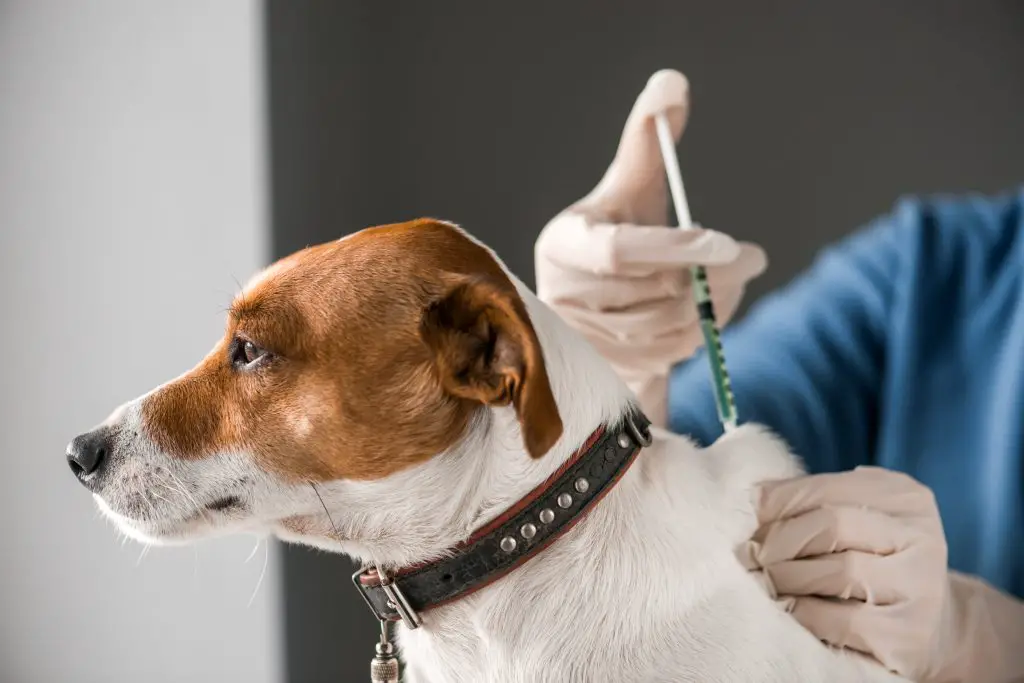Saying goodbye to your furry friend is hard at the best of times. Owners can choose from a range of options when deciding how to manage their deceased pet. This choice depends on personal circumstances, including cost, beliefs, and available providers. For those who opt against burial, this article details the communal cremation process and what to expect.
What Does Communal Cremation Mean?
Communal cremation is an option for pet body disposition that is used when an owner does not want the ashes back. Also known as group cremation, this process involves multiple pets being cremated at once. This is in contrast to individual cremation where only one animal is placed in the crematory and the remains are provided afterward.
Pet Communal Cremation Process

If you are unsure about what to expect after your pet passes away, then this guide details the next steps to take:
- If your pet passed away at home, engage a local animal crematory and the staff will guide you through the process and options. If the death occurred at the local veterinary clinic then they can manage the cremation process on your behalf
- Your pet can either be dropped off at the crematory or they will coordinate pick up for a fee. This should occur soon after death before the body begins to decompose
- Depending on when your pet arrives and whether the provider is ready to undertake a communal cremation (they may be waiting for other animals to process together), the body is stored in a refrigerated morgue or cooler
- When the communal cremation process commences, your pet’s body will be placed in a cremation chamber with other animals
- The unit is raised to high temperatures of up to 1400 to 1800 degrees Fahrenheit. This heat causes animal remains to vaporize and incinerate to bones and dust. Depending on the size of the pets inside, the process can take 30 minutes (for smaller animals) up to two hours
- The crematory technician will then use a strong magnet to extract any metal components such as microchips, collars, or surgical pins from the remains
- Finally, the dry bones are put through a cremulator machine. This pulverizes the remains into fine grey ash with the same consistency as sand
- As your pet’s ashes combine with that of other animals in communal cremation, owners generally do not receive an urn back
What is done with communal pet cremation remains?

Pet crematoriums each have different methods of disposing of the ash. Some common approaches are to scatter remains in the sea or to bury or distribute them on land designated for this purpose.
Although it is rare for communal cremations, pet owners sometimes receive a portion of the ash from the facility. This is contained in a box or sealed bag, and contain the remains of their pet along with those of other animals.
Pet communal cremation cost
Communal cremation is the most cost-effective method of disposition as your pet will share a chamber with other animals. The price of pet communal cremation varies between providers and location. On average, the process will cost anywhere from $100 to $250.
Some pet crematoriums charge by the size of your deceased pet. This is because larger pets will take longer to cremate and take up more space in the chamber. Providers often classify animals into classes such as 40-50 Lbs. with costs increasing in line with weight.
There may also be transfer fees if you request a pick up from your home. Many crematories offer a 24/7 pick up service and charges range from $45 dollars depending on distance and shift rates. Note that transfer fees are often included in the total cremation price if the death occurs during business hours.
Pet communal cremation machine
The cremation of a pet utilizes the same process as that of human cremation. The key difference is that the crematorium is smaller in size, and some models have multiple chambers. Some large animal shelters will offer this service too and often do this cheaper than dedicated pet interment services.
Can I witness pet communal cremation?
Some pet owners are keen to witness the cremation process in seeking closure. Whether the crematorium allows this is dependent on the provider. If you wish to view the cremation, then there is usually a charge of $25 to $35 to do this. Ensure you check that this is possible before engaging a facility.
Pros and Cons of Pet Communal Cremation
Owners may be overwhelmed with grief following a loss and struggle with decisions that best honor their pet. Knowing the key pros and cons of communal cremation will help in making informed choices.
| Pros of Communal Cremation | Cons of Communal Cremation |
| – Cheapest form of pet cremation – Much more economical than pet burial – You can still have a memorial – Lower environmental impact due to combined use of the crematory – Owners are usually able to view the cremation for a fee – Owner does not have to purchase an urn; the facility is responsible for disposing of the ashes – Widely available as a service | – The owner usually doesn’t receive the ashes of their pet if desired – No physical location to visit the decedent pet – Where ashes are provided, they are combined with those of other animals in the same cremation chamber – Some may view this process as less respectful than pet burial or individual cremation – Higher carbon footprint than that of water-based forms of pet cremation |
Communal vs Private Cremation

When deciding between communal or private pet cremation (where only one animal is incinerated at once), owners need to consider their own circumstances.
If pet owners are concerned about cost, the impact of cremation on the environment, and they are okay with not receiving ashes, then communal or mass cremation is a good fit. Note that some pet crematoriums will provide keepsakes for a fee. This may include a paw print mold or clippings of fur. These items can act as an alternative way to memorialize pets if remains are not provided.
Owners who prefer to receive their pet’s remains and are willing to pay for this service are more suitable for private or individual cremation. A compromise between the two options is to use partitioned cremation. This is where the facility will cremate the pet along with other animals in a separated chamber. Any remains will predominantly be from one animal, but there is a chance that some particles will mix with those of surrounding carcasses.
Picking a Reputable Pet Crematory
Unlike the human cremation industry, there are really no regulations for pet crematories. Recent controversies detailing mishandling of the process have come to light. While issues largely relate to communal cremation being used where owners have paid for private cremation, it emphasizes the need to pick a reputable facility. Some ways to ensure your deceased pet is handled with respect include:
- Doing your research on the policies and credentials of a pet crematory, possibly in advance of death if you know that the end is near
- Ensure that you check which provider your vet is using if the cremation is managed on your behalf by the clinic. There are often lucrative commissions paid out to vets for referring business
- Ask the pet crematory if they use a metal tag system during the cremation process. This serves as an identifier so you have certainty that the right remains were cremated
- Use a provider who is a member of the International Association of Pet Cemeteries’ and Crematories (IAOPCC). These facilities must adhere to a strict code of ethics and standards of practice
Communal Cremation FAQs

Is it better to bury or cremate your pet?
This depends on a range of factors including personal preference, available resources, and financial means. Cremation of your pet is generally cheaper, while pet burial may incur costs such as a casket and plot at a pet cemetery.
Do I get my pet’s ashes in a communal cremation?
Generally no, owners do not receive their pet’s ashes after a communal cremation. The crematory will usually scatter the remains either at sea or in an area reserved for this purpose (e.g. farmland or a forest).
Is it legal to bury my pet in my backyard?
Regulations for the burial of a deceased pet at home varies across states and municipalities. At a minimum, you should own the property where the animal may be buried. Ensure that you check with the relevant authorities (e.g. local county and neighborhood deed rules) to confirm legality before interment of your pet.






